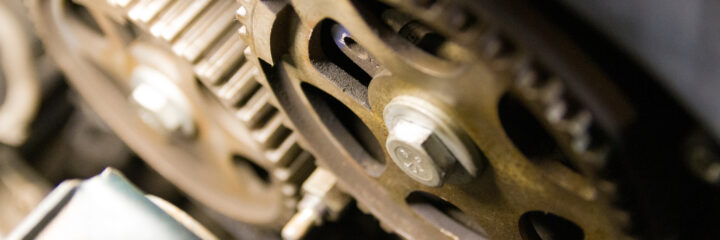A serpentine belt, which is sometimes referred to as a drive belt, is an important component of the engine of your vehicle. It’s responsible for transmitting power to a number of subsystems, including the alternator, the power steering pump, and the air conditioning compressor.
It is essential to the health as well as the performance of your vehicle that you know how long a serpentine belt typically lasts and when it is time to replace it.
It is necessary to perform routine inspections and maintenance on the serpentine belt if you want to ensure that it stays in good shape. On the other hand, there are a few signs that point to the fact that it could be time to replace the belt. In this article, we’ll explain how long a serpentine belt lasts, along with some other important information.
- Symptoms of a Broken Serpentine Belt
- Aging Serpentine Belts
- Belt Tensioner and Its Function
- Keep an Eye on Your Engine
- Recommendations To Extend the Lifespan of Your Vehicle’s Serpentine Belt
- Serpentine Belt FAQs
- How Often Should I Replace My Serpentine Belt?
- Can I Replace the Serpentine Belt Myself, or Should I Take It to a Professional?
- How Much Does It Cost To Replace a Serpentine Belt?
- How Long Does It Take for a Serpentine Belt To Get Replaced?
- What Should Owners of Luxury Vehicles Know About Maintaining Their Serpentine Belts?
- Is It Time To Get a New Serpentine Belt?
Symptoms of a Broken Serpentine Belt
- Your vehicle’s age as well as the number of miles it has been driven, should be important considerations. According to Westbrook Toyota, the serpentine belt should be replaced every 50,000 to 100,000 miles or every 5-7 years, as this is the standard rule of thumb. Nevertheless, this can change based on the make and model of the vehicle you drive.
- Visible evidence of wear or damage on the belt itself is another indication that it may be time for a replacement. Cracks, fraying edges, or missing ribs are all evident signs that the serpentine belt has reached its maximum lifespan and needs to be replaced as soon as possible.
- Sounds like squealing or chirping from under the hood, diminished power steering response, or electrical problems like flickering lights could all indicate that your serpentine belt needs to be replaced.
It is imperative that you do not disregard these warning indications since a broken serpentine belt can result in the engine overheating, the discharge of the battery, or even the total failure of the engine.
Therefore, maintaining a proactive approach with frequent inspections according to the manufacturer’s recommendations on the intervals between replacements will ensure that the serpentine belt in your vehicle is replaced at the proper times.
In doing so, not only will you keep the performance at its optimum level, but you will also keep expensive repairs at bay in the future!
Aging Serpentine Belts
There is a natural tendency for components produced from rubber to degrade with the passage of time, and serpentine belts are not an exception to this rule. You’ll notice that your belt has taken on a shiny or “glazed” appearance as the years pass and the miles are racked up.
In addition, cracks may appear along the surface of the belt, and small pieces of the rubber may even peel or chip off.
Old serpentine belts might start to squeal and lose their grip on the pulleys as they age. There is also the possibility that the belt can become misaligned, which will result in additional wear and strain. As time goes on, the screeching and chirping may eventually give way to an abrupt stillness when the belt splits apart, leaving you stuck without a way to operate the essential accessories that are associated with your engine.
Belt Tensioner and Its Function
Drive belts in current automobiles are equipped with self-controlled tensioners, which allow the serpentine belt to maintain a constant level of tension. Due to the important role that this internal spring and pulley system plays in retaining the serpentine belt in its proper position, problems with the steering, cooling, and the engine overall are avoided when the belt is not allowed to slip.
As a result of this, we strongly suggest that you also repair the belt tensioner at the same time that you replace the belt itself.
It is essential to be able to recognize the indicators that a serpentine belt is deteriorating in order to prevent more damage and expensive repairs. One common sign is a squealing noise emerging from the engine compartment. This high-pitched noise frequently happens when the belt is either worn out or becomes slack.
Some other obvious signs that the serpentine belt needs to be changed include cracks or fraying on the surface of the belt itself. Ignoring these warnings will only lead to more serious problems, where you might end up getting stranded on the side of the road.
Keep an Eye on Your Engine

A decline in the performance of the engine is yet another warning sign to keep an eye out for. The failure of a serpentine belt can result in problems with a number of different components, including the alternator, the power steering pump, and the air conditioning compressor.
Because of this, your vehicle’s electrical charging capacities may suffer, and you may have problems guiding it.
In general, being vigilant and aware of these indicators will assist you in addressing any issues that may arise with your serpentine belt in a timely manner. By performing routine inspections and replacements of this essential component, you can ensure that your vehicle operates efficiently and prevent any unanticipated malfunctions while driving.
Recommendations To Extend the Lifespan of Your Vehicle’s Serpentine Belt
You will be able to dramatically increase the longevity of this essential component by adhering to a few straightforward maintenance recommendations and adopting preventative actions.
1. Maintain the Correct Belt Tension
Excessive wear and tear can be caused by a belt that is either too loose or too tight, which can ultimately result in the belt breaking before its time. In order to avoid putting unneeded strain on the belt, it is important to perform routine inspections and adjustments of the tension in accordance with the guidelines provided by the manufacturer of your vehicle.
2. Perform Routine Inspections
Examine the surface for any evidence of wear and tear, such as cracks, edges that are fraying, or glazing. In the event that any damage is found, it is essential to immediately replace the belt in order to avoid any more issues.
3. Clean Out Debris
You can extend the lifespan of your serpentine belt by taking additional preventative steps, in addition to performing routine inspections and making adjustments to the tension as part of your maintenance routine.
The amount of friction and wear on the belt can be reduced by keeping all of the pulleys clean and clear of debris. Moreover, ensuring that the pulleys are aligned correctly decreases the amount of strain placed on the belt as well as any associated components.
You can extend the lifespan of your serpentine belt by putting this maintenance advice into practice and by taking preventative steps such as having it inspected on a regular basis and ensuring that the tension is adjusted appropriately.
This not only protects you from unanticipated breakdowns but also contributes to your car’s engine system maintaining its best performance and efficiency.
Serpentine Belt FAQs
In this FAQ section, we will provide comprehensive answers to these common questions and address concerns related to specific vehicle types, ensuring that readers have all the information they need regarding their serpentine belts’ maintenance and replacement requirements:
How Often Should I Replace My Serpentine Belt?
Around 60,000 to 100,000 miles or every 5-7 years.
Can I Replace the Serpentine Belt Myself, or Should I Take It to a Professional?
It’s true that there are some repairs you should never attempt on your own, but this isn’t one of them. If you already have a basic understanding of mechanics, you can use YouTube to DIY this repair. However, if you find yourself struggling with grasping the basics of replacing a serpentine belt, a professional is your best bet!
How Much Does It Cost To Replace a Serpentine Belt?
The price of a standard serpentine belt starts at about $25 and can go up to $75 at the most. If you have any experience with basic auto repair, you might be able to change the belt on your own, which would save you the cost of labor, which is typically between $75 and $120.
When everything is said and done, the cost to replace your serpentine belt could range anywhere from $100 to $195.
How Long Does It Take for a Serpentine Belt To Get Replaced?
Fixing this relatively straightforward issue shouldn’t take more than an hour or two.
What Should Owners of Luxury Vehicles Know About Maintaining Their Serpentine Belts?
To ensure proper maintenance of your luxury vehicle’s serpentine belts, it is highly recommended to consult with a certified technician who specializes in luxury car service. These professionals have extensive knowledge and experience working with high-end vehicles and will provide expert guidance on maintaining your specific make and model.
Is It Time To Get a New Serpentine Belt?
By staying proactive in maintaining your vehicle’s serpentine belts, you can enjoy a smooth driving experience while prolonging the life of your engine components. Remember that prevention is key when it comes to expensive repairs related to neglected serpentine belts. So, invest the time and effort in regular inspections and replacements to keep your beloved vehicle running at its best!


